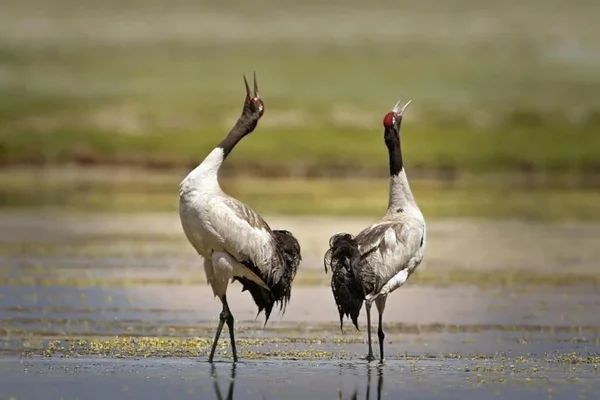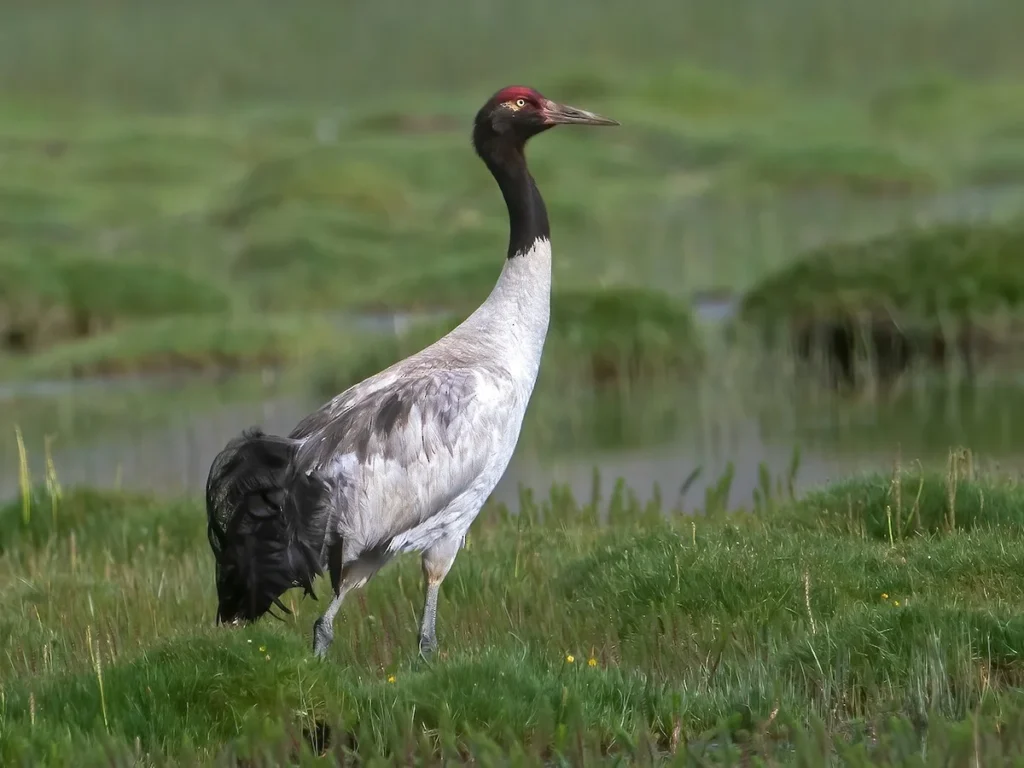Black-necked crane The Wildlife Institute of India and the Zoological Survey of India have been carrying out assessment of the black-necked cranes in Ladakh, revealing a population size of approximately 66-69 individuals.
- In Ladakh, the survey revealed a population size of approximately 66-69 individuals, offering crucial insights into the species’ status in the region.
About Black-necked Crane:
- The black-necked crane (Grus nigricollis) is a medium-sized crane in Asia that breeds on the Tibetan Plateau and remote parts of India and Bhutan.
- Features:
- It is whitish-gray, with a black head, red crown patch, black upper neck and legs, and white patch to the rear of the eye.
- The tail is black and makes it easy to distinguish at a distance from the similar looking common crane which has grey tail.
- Both sexes are similar
Habitat:
- The black-necked crane summers mainly in the high altitude Tibetan Plateau.
- The breeding areas are alpine meadows, lakeside and riverine marshes and river valleys.
- Wintering areas tend to be in sheltered valleys or lower altitudes.
- The largest populations are in China with smaller numbers extending into Vietnam, Bhutan and India.
Protective Measures:
- It is revered in Buddhist traditions and culturally protected across much of its range.
- A festival in Bhutan celebrates the bird while the Indian union territory of Ladakh has designated it as the state bird.
Legal Protection:
- Black-necked Crane listed in Schedule I of the Wild Life (Protection) Act, 1972, receiving the highest degree of protection.
- Listed in Appendix I of the Convention on International Trade in Endangered Species of Wild Fauna and Flora (CITES) and the Convention on the Conservation of Migratory Species.
Protected Areas:
- Important habitats, including Changthang Sanctuary in Ladakh, designated as Protected Areas.
- Tso Kar Wetlands Complex, a vital foraging and breeding ground, declared a Ramsar Site in December 2020.
National Wildlife Action Plan:
- The National Wildlife Action Plan (2017-2031) prioritizes the conservation of threatened species, addressing human-wildlife conflict, and preserving ecosystems.
Ref: Source
| UPSC IAS Preparation Resources | |
| Current Affairs Analysis | Topperspedia |
| GS Shots | Simply Explained |
| Daily Flash Cards | Daily Quiz |



